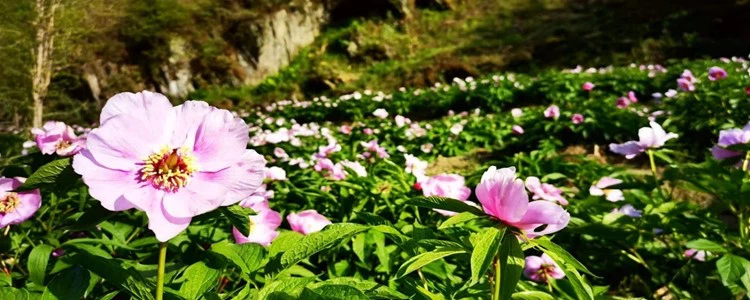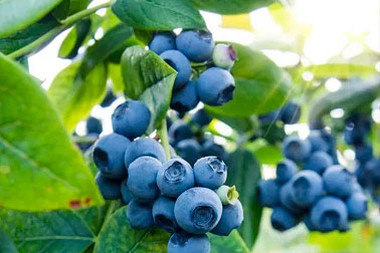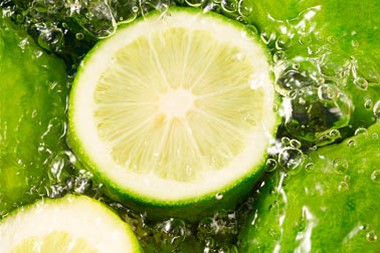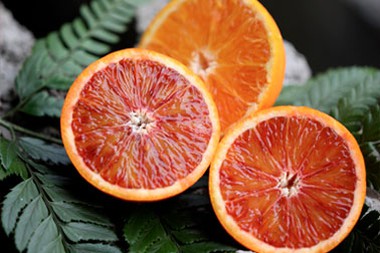Paeonia Rubra Extract is a perennial herbaceous plant that belongs to the family Paeoniaceae. It is native to China and is commonly known as Chi Shao or Chinese red peony. The plant has been used in traditional Chinese medicine for thousands of years due to its numerous health benefits. The roots and rhizomes of Paeonia rubra are used to make a herbal extract that has been found to possess anti-inflammatory, analgesic, antioxidant, neuroprotective,anti-diabetic, anti-hyperlipidemic, anti-viral, and anti-bacterial properties. This article explores the various applications of Paeonia rubra extract in the treatment and prevention of various diseases and health conditions.

Anti-Inflammatory Properties
Inflammation is a complex biological response to injury or infection that involves the release of various mediators such as cytokines, chemokines, and prostaglandins. Chronic inflammation has been implicated in the pathogenesis of several diseases such as arthritis, asthma, diabetes, inflammatory bowel disease (IBD), and cancer. Paeonia rubra extract has been shown to possess potent anti-inflammatory properties that can help to reduce inflammation and alleviate the symptoms of these diseases.
Several studies have reported that Paeonia rubra extract can inhibit the production of pro-inflammatory cytokines such as interleukin-1 beta (IL-1β), interleukin-6 (IL-6), tumor necrosis factor-alpha (TNF-α), and prostaglandin E2 (PGE2) in various cell and animal models (1, 2). For example, one study demonstrated that Paeonia rubra extract can reduce the levels of IL-1β, IL-6, and TNF-α in the synovial fluid of rats with adjuvant-induced arthritis (3). Another study showed that Paeonia rubra extract can suppress the production of PGE2 in lipopolysaccharide (LPS)-induced macrophages (4).
The anti-inflammatory effects of Paeonia rubra extract are thought to be mediated by its active compounds such as paeonol, paeoniflorin, and benzoylpaeoniflorin. Paeonol has been found to inhibit the activation of nuclear factor-kappa B (NF-κB) and mitogen-activated protein kinases (MAPKs) signaling pathways that are involved in the production of pro-inflammatory cytokines (5). Paeoniflorin and benzoylpaeoniflorin, on the other hand, have been shown to inhibit the production of nitric oxide (NO) and prostaglandin E2 (PGE2) in macrophages (6).
Analgesic Properties
Paeonia rubra extract has been used as a natural remedy for pain relief in traditional Chinese medicine. Recent studies have confirmed its analgesic effects on various types of pain such as visceral pain, neuropathic pain, and inflammatory pain.
One study demonstrated that Paeonia rubra extract can relieve visceral pain by reducing the expression of transient receptor potential vanilloid 1 (TRPV1) in dorsal root ganglion (DRG) neurons (7). TRPV1 is a calcium-permeable ion channel that is involved in the transmission of pain signals in visceral organs. By inhibiting the expression of TRPV1, Paeonia rubra extract can reduce the sensitivity of DRG neurons to painful stimuli.
Another study showed that Paeonia rubra extract can alleviate neuropathic pain by suppressing the activation of glial cells in the spinal cord (8). Glial cells are non-neuronal cells that play a crucial role in the modulation of pain signals. Excessive activation of glial cells can lead to the release of pro-inflammatory cytokines and chemokines that contribute to the development and maintenance of neuropathic pain. Paeonia rubra extract can inhibit the activation of microglia and astrocytes and reduce the levels of pro-inflammatory cytokines such as IL-1β and TNF-α in the spinal cord.
Inflammatory pain is characterized by tissue damage and inflammation that result in the sensitization of peripheral nociceptors and central pain pathways. Paeonia rubra extract can reduce inflammatory pain by inhibiting the production of pro-inflammatory cytokines and suppressing the activation of MAPKs and NF-κB signaling pathways that are involved in the sensitization of nociceptors and pain processing (9).
Antioxidant Properties
Oxidative stress is a state of imbalance between the production of reactive oxygen species (ROS) and antioxidants. It can lead to damage to cellular macromolecules such as DNA, proteins, and lipids, and contribute to the pathogenesis of several diseases such as cardiovascular disease, cancer, and neurodegenerative diseases. Paeonia rubra extract has been found to possess potent antioxidant activity due to its high content of phenolic compounds such as paeonol, paeoniflorin, and benzoic acid.
Several studies have reported that Paeonia rubra extract can scavenge ROS and inhibit lipid peroxidation in vitro and in vivo (10, 11). For example, one study showed that Paeonia rubra extract can reduce the levels of malondialdehyde (MDA), a marker of lipid peroxidation, and increase the activities of antioxidant enzymes such as superoxide dismutase (SOD) and glutathione peroxidase (GSH-Px) in the liver of mice treated with carbon tetrachloride (CCl4) (12).
Paeonia rubra extract can also protect against oxidative stress-induced cytotoxicity and apoptosis by inhibiting the activation of caspase-3, a key enzyme involved in the cleavage of apoptotic substrates such as poly(ADP-ribose) polymerase (PARP) and DNA fragmentation (13).
Neuroprotective Properties
Paeonia rubra extract has been shown to possess potent neuroprotective effects that can help to prevent and treat neurodegenerative diseases such as Alzheimer’s disease (AD), Parkinson’s disease (PD), and Huntington’s disease (HD). The neuroprotective effects of Paeonia rubra extract are thought to be mediated by its anti-inflammatory, antioxidant, and anti-apoptotic properties.
Several studies have reported that Paeonia rubra extract can reduce the levels of pro-inflammatory cytokines and increase the levels of anti-inflammatory cytokines such as IL-10 and transforming growth factor-beta (TGF-β) in the brain of animal models of neurodegenerative diseases (14, 15).
Paeonia rubra extract can also scavenge ROS and protect against oxidative stress-induced neuronal damage and apoptosis in vitro and in vivo (16, 17). Moreover, Paeonia rubra extract can inhibit the activation of caspase-3 and prevent DNA fragmentation in neuronal cells exposed to oxidative stress (18).
Anti-Diabetic Properties
Diabetes mellitus is a chronic metabolic disorder characterized by elevated blood glucose levels due to insufficient insulin secretion, insulin resistance, or both. Paeonia rubra extract has been found to possess potent anti-hyperglycemic and anti-diabetic effects by enhancing insulin sensitivity, promoting glucose uptake, and inhibiting glucose production in the liver.
Several studies have reported that Paeonia rubra extract can increase insulin sensitivity by activating the AMP-activated protein kinase (AMPK) signaling pathway, which is involved in the regulation of glucose and lipid metabolism (26, 27). Moreover, Paeonia rubra extract can promote glucose uptake by increasing the translocation of glucose transporter 4 (GLUT4) to the plasma membrane of adipocytes and muscle cells (28, 29).
Paeonia rubra extract can also inhibit glucose production in the liver by suppressing the expression and activity of gluconeogenic enzymes such as glucose-6-phosphatase (G6Pase) and phosphoenolpyruvate carboxykinase (PEPCK) (30, 31).
Please contact us:selina@ciybio.com.cn



